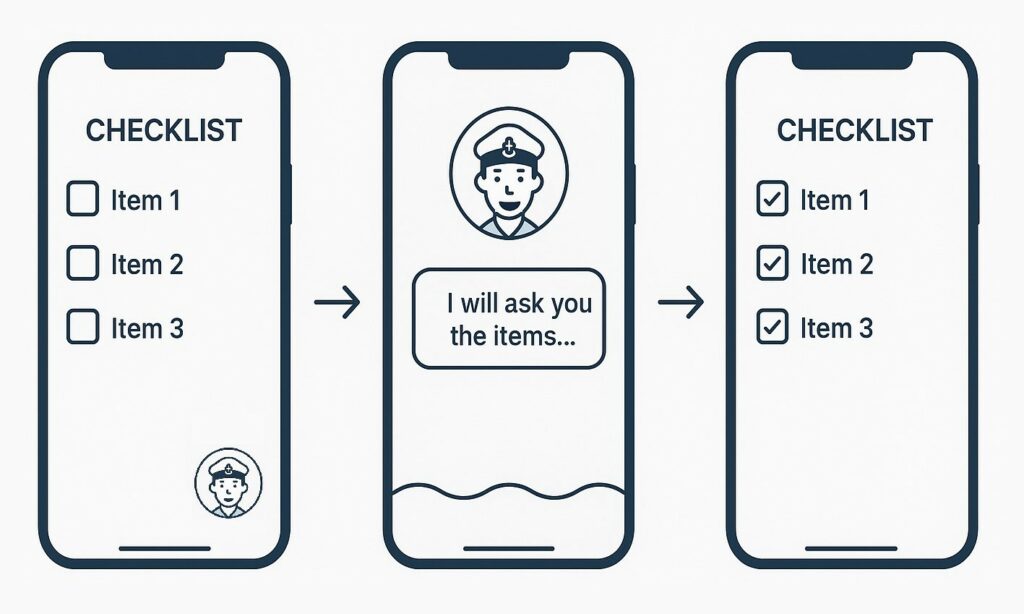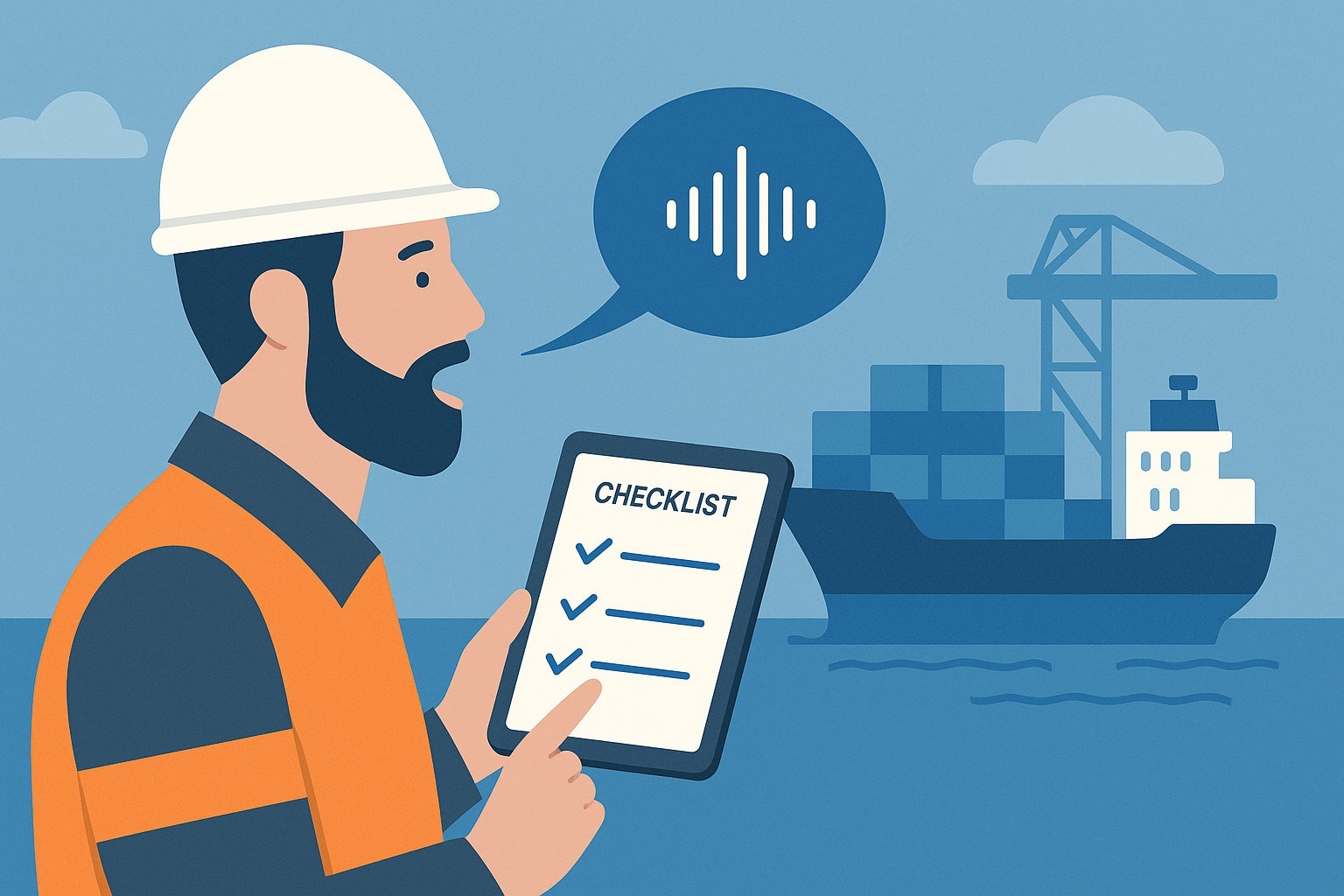We’re evaluating voice input to make maritime workflows more accessible, especially in situations where hands are busy or interaction with a screen isn’t practical. Instead of tapping through checklists, what if you could just talk?
Digital checklists are already a great fit for many onboard tasks. But there are moments, such as when wearing gloves, handling equipment, or operating in tight spaces, where even the best interface takes a back seat to simply speaking. In those cases, having an assistant that listens and responds can make routine procedures faster, smoother, and more natural to complete.
From Mockup to Interaction
The idea is simple: speak naturally and let the assistant fill in the checklist for you. Our prototype allows testers to say things like “Start departure checklist,” confirm with “Yes, all mooring lines removed,” or log values like “Main engine temperature 410 degrees Celsius.” The assistant interprets each response, matches it to the correct field, and updates the checklist.
This isn’t just voice-to-text. The assistant uses the same logic structure that powers our metadata-rich checklists. It knows which fields are required, adapts based on your answers, and keeps track of what’s already been said.
We’re currently evaluating clarity of prompts, pacing of the conversation, and how it feels to be guided through a workflow by voice. Feedback from early testers has helped us refine the interaction to feel helpful, not robotic.

Testing the Real Challenge
One of the most important lessons so far isn’t about AI accuracy—it’s about deployment. Vessels often operate without internet. For this assistant to be useful, it must run offline. That means deploying it on local edge devices that can handle the compute load without disrupting other onboard systems.
We’re working to ensure the assistant runs smoothly alongside other tools, without slowing down the system or draining shared resources. In the future, we’d love to run the assistant directly on mobile phones. But that depends on hardware availability, and most current devices in the field aren’t yet up to the task.
What’s Next
The voice assistant is still in evaluation, but we’re making steady progress. We’ll continue tuning the interaction, exploring noise resilience, and refining how the assistant performs in resource-constrained environments.
If you’re curious about how this could work for your crew or want to be part of the early feedback loop, get in touch.


